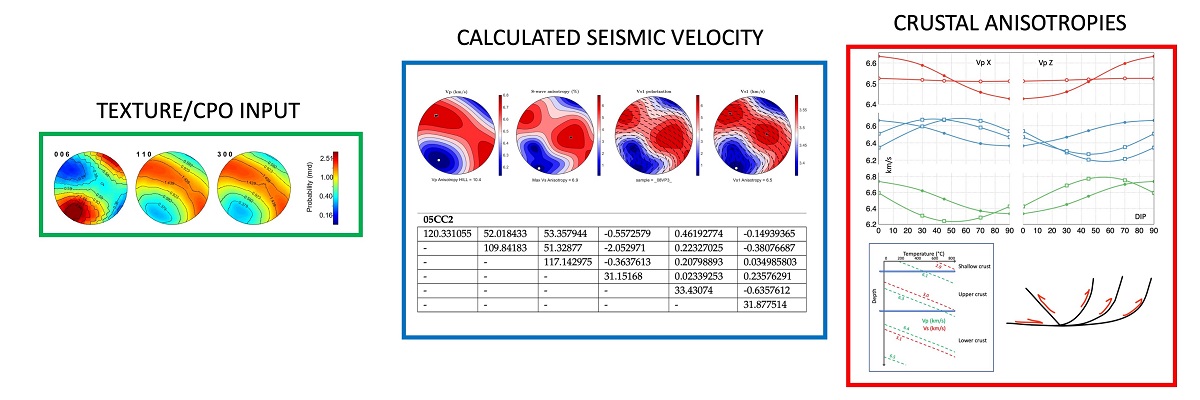Eight samples of limestones and marbles were studied by neutron diffraction to collect Quantitative Texture (i.e. Crystallographic Preferred Orientations or CPO) of calcite deforming at different depths in the crustal profile. We studied the different CPO patterns developed in shear zones at different depth and their influence on seismic anisotropies. Samples were collected in the French and Italian Alps, Apennines and Paleozoic Sardinian basement. They are characterized by different mesoscopic fabrics, from isotropic to highly anisotropic (e.g. mylonite shear zone). Mylonite limestones occur as shear zone horizons within the Cenozoic Southern Domain in Alpine thrust-and-fold belts (Italy), the Briançonnais domain of the Western Alps (Italy-France border), the Sardinian Paleozoic back-thrusts or in the Austroalpine Upper units. The analyzed marbles were collected in the Carrara Marble, in the Austroalpine Units in the Central (Mortirolo) and Western Alps (Valpelline). The temperature and depth of development of the fabrics vary from shallow, < 100°C, to more than 800°C at depth of about 30 km. Quantitative Texture Analysis shows different types of patterns for calcite CPO, from random (Type A) to strongly textured (Type B); Type B may be further separated in orthorhombic and monoclinic, based on the angle defined with the mesoscopic fabrics, namely the shear plane. Seismic anisotropies were calculated by homogenizing the single crystal elastic tensor, using the Orientation Distribution Function calculated by the Quantitative Texture Analysis. The resulting P- and S-waves anisotropies show a wide variability due to the textural types, depth within the crustal profile, and dip of the shear planes.

